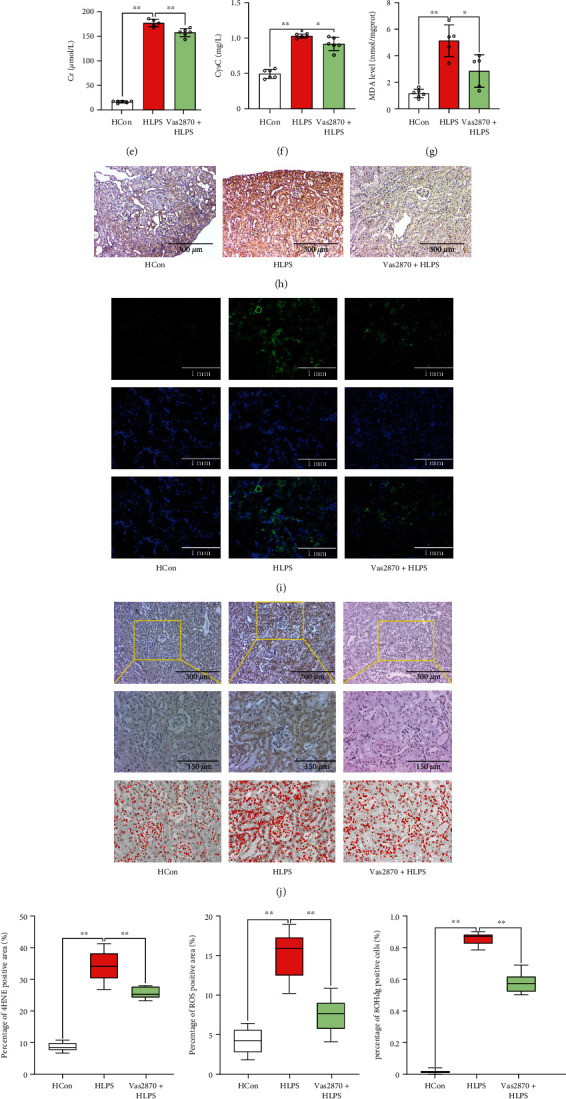Figure 8.

Inhibition of the NADPH oxidase pathway reduced septic renal injury via suppressing renal oxidative stress in diabetic mice. The survival rate (a) of the mice was calculated. Renal pathology was clearly observed via renal H&E ((b) 200x) staining and PAS staining ((c) 200x). Serum BUN (d), CCr (e), and Cysc (f) levels were determined. MDA was measured using ELISA (g). Renal 4-hydroxynonenal (4-HNE) immunohistochemical staining (h), renal ROS immunofluorescence staining (i), and 8-hydroxydeoxyguanosine (8-OHdG) immunohistochemical staining (j) were performed. Semiquantitative analysis of 4-HNE immunohistochemical staining (k), ROS immunofluorescence staining (l), and 8-OHdG immunohistochemical staining (m). Renal NADPH subunits NOX2 and NOX4 were detected by western blotting (n). Each bar represents the mean ± SEM (n = 4 − 10). ∗p < 0.05 and ∗∗p < 0.01, one-way ANOVA with Tukey's test. Hcon: mice fed a HDF diet for 12 weeks received the same volume of solvent without LPS; HLPS: mice fed a HDF diet for 12 weeks and subjected to LPS (10 mg/kg, intraperitoneally) stimulation; Vas2870+HLPS: Vas2870 (10 mg/kg) was administered intraperitoneally 3 h before LPS administration.
